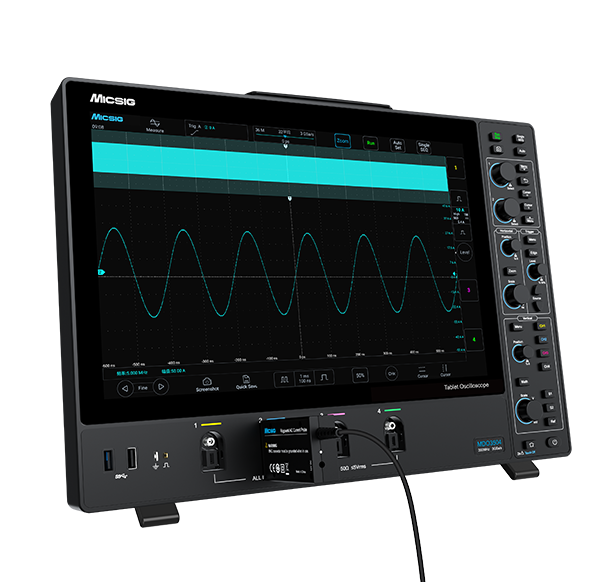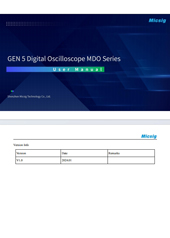
GEN 5 Digital Storage Oscilloscope
MDO Series
Bandwidth:250MHz-500MHz
Sampling Rate:3GSa/s
Memory Depth:360Mpts
Analog Channels:4
Display:14 inches, 1920*1200
GEN 5 Digital Storage Oscilloscope
MDO Series
Bandwidth:250MHz-500MHz
Sampling Rate:3GSa/s
Memory Depth:360Mpts
Analog Channels:4
Display:14 inches, 1920*1200

MDO series is Micsig's 5th-generation digital storage oscilloscope, with 500MHz bandwidth, 3GSa/s sampling rate, 4 analog channels, and 360Mpts memory depth; 3.58cm ultra-thin body support wall / arm mounting, significantly saves desktop space; A 14-inch integrated touch screen with resolution of 1920 x 1200 provides ultimate clear waveform display.
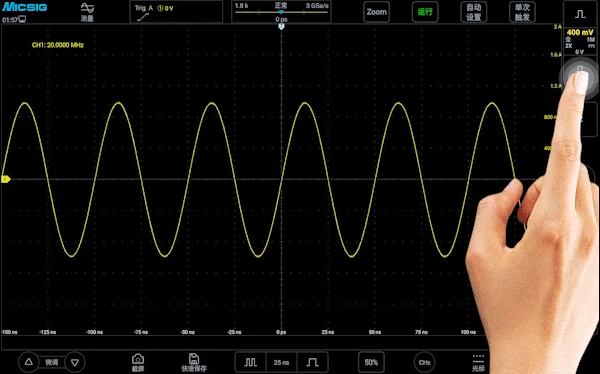
Most friendly UI
Equipped with instrument-dedicated SigTestUI™ operating system, and accumulation of 10 years of UI design experience, the MDO series evolved to simplify all user interfaces, newer engineers can quickly learn to use in 5 minutes.
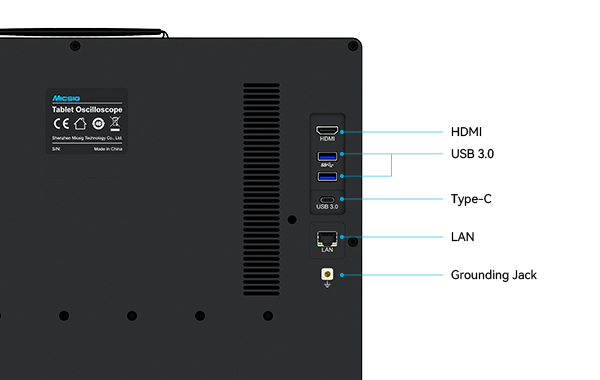
Complete connectivity
Original Mic-OPI™ probe interface, automatically identifies passive probe attenuation, one-click to proceed auto-calibration; standard with BNC adapter, also has USB 3.0 Host, USB Type-C, LAN, HDMI, Trigger out etc.

Low noise floor
The noise of MDO series is less than 90μVrms under 500MHz full bandwidth, allow engineers accurately capture weak but important signals during daily circuit debugging.

Deep memory and segmented storage acquisition
Up to 360Mpts memory depth delivers excellent signal fidelity, segmented storage divides the limited storage space into multiple small segments, and collects multiple trigger events into one storage space, effectively captures target signals multiple times over a long period of time and play back for further analysis.

Hardware digital filter
Hardware digital filtering can selectively pass or block signal components within a specific frequency range, very useful for analyzing specific frequency bands of a signal or observing changes in specific frequency components.

Comprehensive selection of probes
In addition to the standard passive probes, the MDO series supports connection to all Micsig probes: optical-fiber isolated probe, high-voltage differential probes, and AC/DC current probes, such combination can maximize the performance of the probe and oscilloscope.
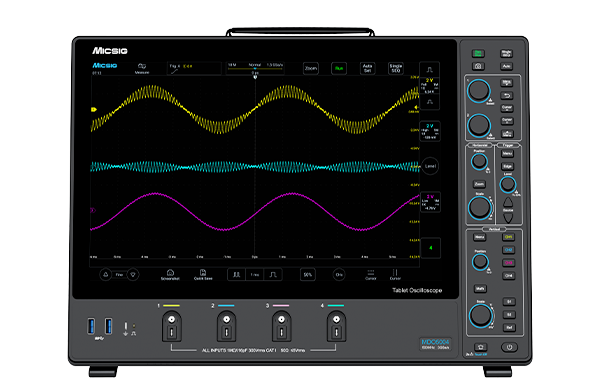
MDO series is Micsig's 5th-generation digital storage oscilloscope, with 500MHz bandwidth, 3GSa/s sampling rate, 4 analog channels, and 360Mpts memory depth; 3.58cm ultra-thin body support VESA mounting, significantly saves desktop space; A 14-inch integrated touch screen with resolution of 1920 x 1200 provides ultimate clear waveform display.

Most friendly UI
Equipped with instrument-dedicated SigTestUI™ operating system, and accumulation of 10 years of UI design experience, the MDO series evolved to simplify all user interfaces, newer engineers can quickly learn to use in 5 minutes.

Complete connectivity
Original Mic-OPI™ probe interface, automatically identifies passive probe attenuation, one-click to proceed auto-calibration; standard with BNC adapter, also has USB 3.0 Host, USB Type-C, LAN, HDMI, Trigger out etc.

Low noise floor
The noise of MDO series is less than 90μVrms under 500MHz full bandwidth, allow engineers accurately capture weak but important signals during daily circuit debugging.

Deep memory and segmented storage acquisition
Up to 360Mpts memory depth delivers excellent signal fidelity, segmented storage divides the limited storage space into multiple small segments, and collects multiple trigger events into one storage space, effectively captures target signals multiple times over a long period of time and play back for further analysis.

Hardware digital filter
Hardware digital filtering can selectively pass or block signal components within a specific frequency range, very useful for analyzing specific frequency bands of a signal or observing changes in specific frequency components.

Comprehensive selection of probes
In addition to the standard passive probes, the MDO series supports connection to all Micsig probes: optical-fiber isolated probe, high-voltage differential probes, and AC/DC current probes, such combination can maximize the performance of the probe and oscilloscope.
Key Specifications
Key Specifications

